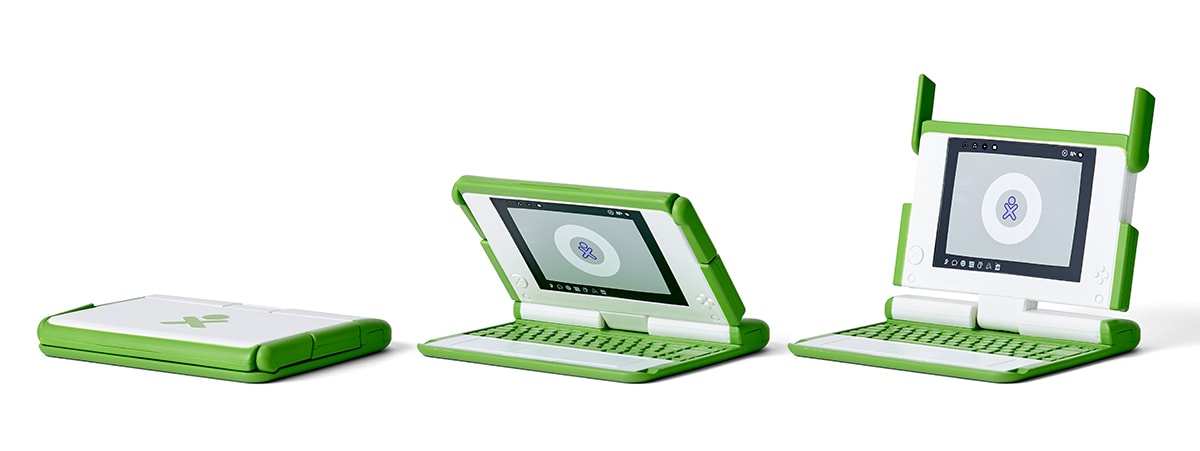
- Weight: 5oz
- Size: W4.3xD4xH4mm
- Material: PVC
- Lifespan: 7 years
- Funding: $60M*
- Units shipped: 3,000,000
- Retail Price: $208

The Story
The One Laptop Per Child project set out to produce a universally-accessible open-source $100 laptop and to airdrop these devices en masse on the developing world, thereby revolutionizing education (?). Out of this constructionist tech-utopian philosophy came a potent design-for-social-good symbol, about 30% over cost, that was utterly dismantled by contact with real world use cases. The OLPC fell upon the potent sword of its own hubristically ambitious promises.
Developed out of the MIT Media Lab and spearheaded in large part by Nicolas Negroponte (who more recently gained fame for doubling down on the decision to take investment money from Jeffrey Epstein), the OLPC is the archetypical disruptive tech object. At a time when the idea of digital literacy was the grade-school education equivalent of “learn to code,” the OLPC project secured backing from a laundry list of prominent tech companies, both in direct donations and manufacturing support.
The singularly beautiful OLPC, designed by Yves Behar, ran oh-so-accessible Linux using a completely bespoke pictogram-based UI. Users described the OLPC as “slow,” “clunky,” “frustrating,” and “often broken and hard to repair.” OLPC’s corporate sponsors were happy to donate materials and tech, but specifically the out-of-date stuff that they couldn’t sell to their more affluent actual customers. The widely-touted $100 price tag also became the OLPC’s personal albatross–the number appears to have initially been selected purely for catchiness and not based on any of the practical logistics of manufacturing the laptop.

To hear the various big players behind the OLPC tell it, the cute, busted little laptop created the way for the popular niche now occupied by Chromebooks. To hear history tell it, the OLPC represents the pinnacle of “design thinking”–a willful disregard for execution and systemic causes in favor of a singular object, made and abandoned as soon as it crashed against the walls of reality.


